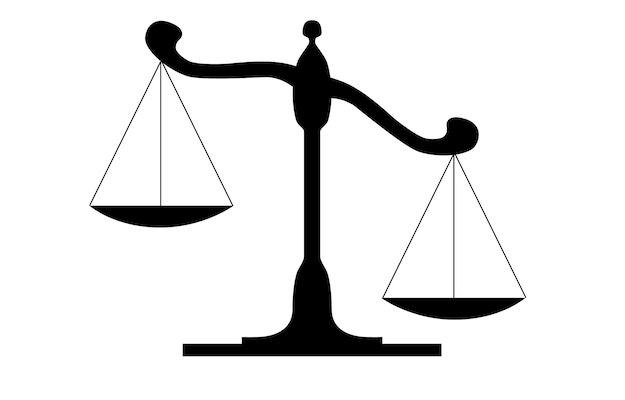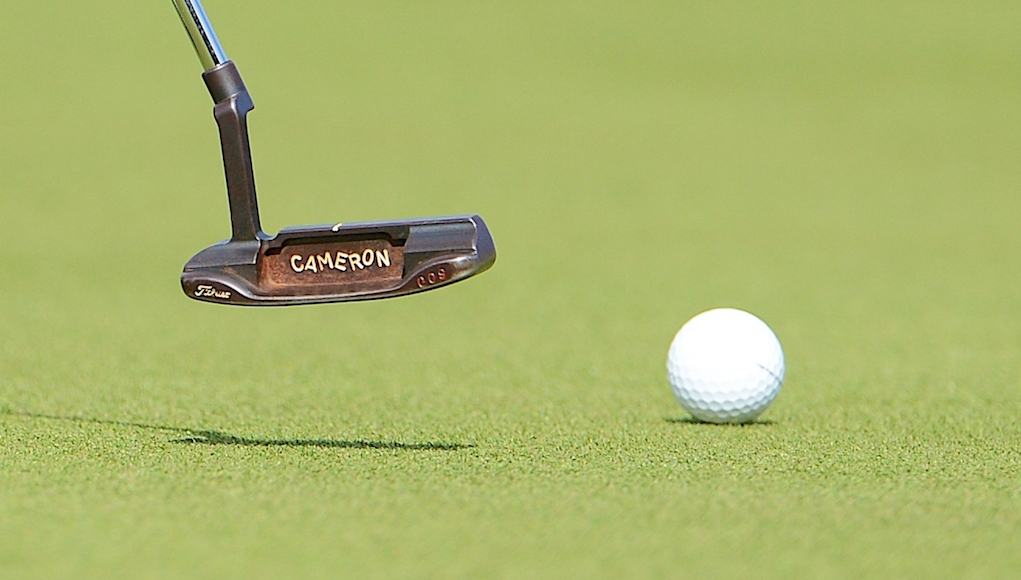Instruction
The Ultimate Putting Program (Part 2): Putter weight affects speed

Putting well has a lot to do with having the ability to control speed, so the first thing that I want to identify is the optimal speed for golfers to maximize the 4.25-inch width of the hole.
According to AimPoint Technologies, on a missed putt, a golfer’s ball should stop 6-to-8 inches beyond the hole, which is about one revolution of the golf ball. For every revolution past that, a golfer diminishes the effective size of the hole by 12 percent. So, if golfers frequently roll the ball 1, 2, or 3 feet past the hole, they significantly lower their chances of making the putt. The previously noted “18 inches” past the hole as optimum speed may have worked in the past, but today’s green speeds require us to roll the ball at a much slower pace.
Hands and Pressure
Our hands act as scales, sending information to our brains helping to lift objects of various weights. Almost instantly, we know how much energy is needed to throw a baseball 10 feet versus the same distance with a sledge hammer. To control the speed of our putts, our brain deciphers the weight of the putter, the speed of the stroke and the distance to the target in nanoseconds. It is essential to match the weight of the putter to each golfer’s internal perception of weight and speed to give them optimal speed control.
Related: “The Ultimate Putting Program (Part 1): The design of your putter influences aim.”
Grip pressure also plays an important role in controlling speed. A golfer’s grip pressure should be relatively light, and more importantly it should remain constant throughout the stroke. If a golfer’s grip pressure changes during the stroke, it is likely that he or she will alter the path and/or face of the club at impact, thus causing the ball to start on a line other than the intended one. It will also alter speed the speed of the stroke and may even lead to the dreaded “Y” word. I image a lot of us have heard the old phrase of “hold the putter as if you were to hold a baby bird.” I also like the analogy of “hold the putter as though you were holding an open tube of tooth paste.” Whatever analogy you like, hold the putter with light grip pressure and most importantly keep the pressure constant throughout the stoke.
Green Speed
I assume golfers struggle more on fast greens than they do on slow ones, because on fast greens it can be rather easy to send a few balls racing by the hole and then become timid of the speed. Trust me, I have experienced it myself and it is rather frustrating. I have come to learn that golfers can easily adapt to the speed of the greens by making a slight alteration to the weight of their putter.
Above: High-end putters made by Odyssey, Scotty Cameron, Nike, TaylorMade and many others incorporate adjustable weights in their soles to help golfers fine tune head weight.
Edel Golf fitters like me believe golfers should use a heavier putter on fast greens than they do on slow greens. Now, I am sure you’re thinking that it should be the complete opposite, but here is why we believe what we do. The equation for kinetic energy is expressed by “one half the mass multiplied by the square of the velocity,” E=.5MV^2, which shows that the velocity of the stroke has a greater impact on energy than the mass of a putter. This being said, golfers will swing a heavy putter slower than a light putter, thus being advantageous on fast greens. A light putter will serve golfers well on days when the green speeds are slower.
A putter that has adjustable weights offers great benefit to someone who plays golf courses where the green speeds differ or change from one week to the next. For instance, wouldn’t it be nice to have the ability to make your putter lighter on days when you’re leaving the majority of your putts short of the hole on the practice green? I know from experience that when preparing for a tournament it is very likely that the tournament course will have greens much faster than what I am accustomed to playing. In this situation, it may be advantageous to have the ability to alter the weight of my putter to accommodate for the change in green speed. It is certainly worth experimenting.
Stroke Type
Most putting instruction has been been broken down into two distinct styles of the putting stroke; radial and linear. A golfer’s stroke type influences how weight should be distributed throughout the putter. Players with radial strokes are ones where the motion of their stroke originates from a centered point, i.e. the shoulders, or elbows. These players usually have an equal or even a longer backstroke than there forward stroke, control speed by the length of the stroke and maintain a consistent rhythm. Tiger Woods and Stan Utley are an example of a player and a coach who utilize the radial stroke type.
Above: Many great putters, including Tiger Woods, work to maintain a consistent “arc” in their putting strokes.
Players with linear strokes are ones who apply linear thrust to the handle of the golf club in a way that moves it more parallel to the ground. These players usually have a shorter backstroke than forward stroke, and control distance by the speed of the stroke. Jack Nicklaus and Dave Stockton are an example of a player and a coach who utilize the linear stroke type; so do Phil Mickelson and Rory McIlroy.
Above: Many top golfers and coaches advocate the “straight-back straight-through” putting stroke.
The combination of a golfer’s stroke type and the weight distribution of their putter significantly influences their ability to control the speed of their putts. Players who use a radial stoke generally prefer more weight in the club head and/or a softer shaft flex, because they like to “feel” the club head throughout the stroke and “release” it through impact. Players who use a linear stroke generally prefer a putter with weight in the handle to offset the thrust that they apply to it. In recent years, counter weighting has become popular, which can offer great benefit to players with linear stroke types.
Both radial and linear stroke types are acceptable, but players who take advice from both schools of thought will find themselves lost and confused. It would be like trying to be a sprinter and a marathon runner at the same time; it just doesn’t work. My suggestion is to find an experienced putting coach and ask him to help you identify what stroke type best suits your natural tendencies. Identifying what stroke type that is most natural to you should give you an idea of what type of weighting will benefit your game the most.
In my next article, I will explain how aim, speed, and the balance of a putter (toe weighted vs. face weighted) have a direct influence on the path of a golfer’s stroke.
To Continue With The Ultimate Putting Program:
Instruction
The Wedge Guy: Beating the yips into submission

There may be no more painful affliction in golf than the “yips” – those uncontrollable and maddening little nervous twitches that prevent you from making a decent stroke on short putts. If you’ve never had them, consider yourself very fortunate (or possibly just very young). But I can assure you that when your most treacherous and feared golf shot is not the 195 yard approach over water with a quartering headwind…not the extra tight fairway with water left and sand right…not the soft bunker shot to a downhill pin with water on the other side…No, when your most feared shot is the remaining 2- 4-foot putt after hitting a great approach, recovery or lag putt, it makes the game almost painful.
And I’ve been fighting the yips (again) for a while now. It’s a recurring nightmare that has haunted me most of my adult life. I even had the yips when I was in my 20s, but I’ve beat them into submission off and on most of my adult life. But just recently, that nasty virus came to life once again. My lag putting has been very good, but when I get over one of those “you should make this” length putts, the entire nervous system seems to go haywire. I make great practice strokes, and then the most pitiful short-stroke or jab at the ball you can imagine. Sheesh.
But I’m a traditionalist, and do not look toward the long putter, belly putter, cross-hand, claw or other variation as the solution. My approach is to beat those damn yips into submission some other way. Here’s what I’m doing that is working pretty well, and I offer it to all of you who might have a similar affliction on the greens.
When you are over a short putt, forget the practice strokes…you want your natural eye-hand coordination to be unhindered by mechanics. Address your putt and take a good look at the hole, and back to the putter to ensure good alignment. Lighten your right hand grip on the putter and make sure that only the fingertips are in contact with the grip, to prevent you from getting to tight.
Then, take a long, long look at the hole to fill your entire mind and senses with the target. When you bring your head/eyes back to the ball, try to make a smooth, immediate move right into your backstroke — not even a second pause — and then let your hands and putter track right back together right back to where you were looking — the HOLE! Seeing the putter make contact with the ball, preferably even the forward edge of the ball – the side near the hole.
For me, this is working, but I am asking all of you to chime in with your own “home remedies” for the most aggravating and senseless of all golf maladies. It never hurts to have more to fall back on!
Instruction
Looking for a good golf instructor? Use this checklist

Over the last couple of decades, golf has become much more science-based. We measure swing speed, smash factor, angle of attack, strokes gained, and many other metrics that can really help golfers improve. But I often wonder if the advancement of golf’s “hard” sciences comes at the expense of the “soft” sciences.
Take, for example, golf instruction. Good golf instruction requires understanding swing mechanics and ball flight. But let’s take that as a given for PGA instructors. The other factors that make an instructor effective can be evaluated by social science, rather than launch monitors.
If you are a recreational golfer looking for a golf instructor, here are my top three points to consider.
1. Cultural mindset
What is “cultural mindset? To social scientists, it means whether a culture of genius or a culture of learning exists. In a golf instruction context, that may mean whether the teacher communicates a message that golf ability is something innate (you either have it or you don’t), or whether golf ability is something that can be learned. You want the latter!
It may sound obvious to suggest that you find a golf instructor who thinks you can improve, but my research suggests that it isn’t a given. In a large sample study of golf instructors, I found that when it came to recreational golfers, there was a wide range of belief systems. Some instructors strongly believed recreational golfers could improve through lessons. while others strongly believed they could not. And those beliefs manifested in the instructor’s feedback given to a student and the culture created for players.
2. Coping and self-modeling can beat role-modeling
Swing analysis technology is often preloaded with swings of PGA and LPGA Tour players. The swings of elite players are intended to be used for comparative purposes with golfers taking lessons. What social science tells us is that for novice and non-expert golfers, comparing swings to tour professionals can have the opposite effect of that intended. If you fit into the novice or non-expert category of golfer, you will learn more and be more motivated to change if you see yourself making a ‘better’ swing (self-modeling) or seeing your swing compared to a similar other (a coping model). Stay away from instructors who want to compare your swing with that of a tour player.
3. Learning theory basics
It is not a sexy selling point, but learning is a process, and that process is incremental – particularly for recreational adult players. Social science helps us understand this element of golf instruction. A good instructor will take learning slowly. He or she will give you just about enough information that challenges you, but is still manageable. The artful instructor will take time to decide what that one or two learning points are before jumping in to make full-scale swing changes. If the instructor moves too fast, you will probably leave the lesson with an arm’s length of swing thoughts and not really know which to focus on.
As an instructor, I develop a priority list of changes I want to make in a player’s technique. We then patiently and gradually work through that list. Beware of instructors who give you more than you can chew.
So if you are in the market for golf instruction, I encourage you to look beyond the X’s and O’s to find the right match!
Instruction
What Lottie Woad’s stunning debut win teaches every golfer

Most pros take months, even years, to win their first tournament. Lottie Woad needed exactly four days.
The 21-year-old from Surrey shot 21-under 267 at Dundonald Links to win the ISPS Handa Women’s Scottish Open by three shots — in her very first event as a professional. She’s only the third player in LPGA history to accomplish this feat, joining Rose Zhang (2023) and Beverly Hanson (1951).
But here’s what caught my attention as a coach: Woad didn’t win through miraculous putting or bombing 300-yard drives. She won through relentless precision and unshakeable composure. After watching her performance unfold, I’m convinced every golfer — from weekend warriors to scratch players — can steal pages from her playbook.
Precision Beats Power (And It’s Not Even Close)
Forget the driving contests. Woad proved that finding greens matters more than finding distance.
What Woad did:
• Hit it straight, hit it solid, give yourself chances
• Aimed for the fat parts of greens instead of chasing pins
• Let her putting do the talking after hitting safe targets
• As she said, “Everyone was chasing me today, and managed to maintain the lead and played really nicely down the stretch and hit a lot of good shots”
Why most golfers mess this up:
• They see a pin tucked behind a bunker and grab one more club to “go right at it”
• Distance becomes more important than accuracy
• They try to be heroic instead of smart
ACTION ITEM: For your next 10 rounds, aim for the center of every green regardless of pin position. Track your greens in regulation and watch your scores drop before your swing changes.
The Putter That Stayed Cool Under Fire
Woad started the final round two shots clear and immediately applied pressure with birdies at the 2nd and 3rd holes. When South Korea’s Hyo Joo Kim mounted a charge and reached 20-under with a birdie at the 14th, Woad didn’t panic.
How she responded to pressure:
• Fired back with consecutive birdies at the 13th and 14th
• Watched Kim stumble with back-to-back bogeys
• Capped it with her fifth birdie of the day at the par-5 18th
• Stayed patient when others pressed, pressed when others cracked
What amateurs do wrong:
• Get conservative when they should be aggressive
• Try to force magic when steady play would win
• Panic when someone else makes a move
ACTION ITEM: Practice your 3-6 foot putts for 15 minutes after every range session. Woad’s putting wasn’t spectacular—it was reliable. Make the putts you should make.
Course Management 101: Play Your Game, Not the Course’s Game
Woad admitted she couldn’t see many scoreboards during the final round, but it didn’t matter. She stuck to her game plan regardless of what others were doing.
Her mental approach:
• Focused on her process, not the competition
• Drew on past pressure situations (Augusta National Women’s Amateur win)
• As she said, “That was the biggest tournament I played in at the time and was kind of my big win. So definitely felt the pressure of it more there, and I felt like all those experiences helped me with this”
Her physical execution:
• 270-yard drives (nothing flashy)
• Methodical iron play
• Steady putting
• Everything effective, nothing spectacular
ACTION ITEM: Create a yardage book for your home course. Know your distances to every pin, every hazard, every landing area. Stick to your plan no matter what your playing partners are doing.
Mental Toughness Isn’t Born, It’s Built
The most impressive part of Woad’s win? She genuinely didn’t expect it: “I definitely wasn’t expecting to win my first event as a pro, but I knew I was playing well, and I was hoping to contend.”
Her winning mindset:
• Didn’t put winning pressure on herself
• Focused on playing well and contending
• Made winning a byproduct of a good process
• Built confidence through recent experiences:
- Won the Women’s Irish Open as an amateur
- Missed a playoff by one shot at the Evian Championship
- Each experience prepared her for the next
What this means for you:
• Stop trying to shoot career rounds every time you tee up
• Focus on executing your pre-shot routine
• Commit to every shot
• Stay present in the moment
ACTION ITEM: Before each round, set process goals instead of score goals. Example: “I will take three practice swings before every shot” or “I will pick a specific target for every shot.” Let your score be the result, not the focus.
The Real Lesson
Woad collected $300,000 for her first professional victory, but the real prize was proving that fundamentals still work at golf’s highest level. She didn’t reinvent the game — she simply executed the basics better than everyone else that week.
The fundamentals that won:
• Hit more fairways
• Find more greens
• Make the putts you should make
• Stay patient under pressure
That’s something every golfer can do, regardless of handicap. Lottie Woad just showed us it’s still the winning formula.
FINAL ACTION ITEM: Pick one of the four action items above and commit to it for the next month. Master one fundamental before moving to the next. That’s how champions are built.
PGA Professional Brendon Elliott is an award-winning coach and golf writer. You can check out his writing work and learn more about him by visiting BEAGOLFER.golf and OneMoreRollGolf.com. Also, check out “The Starter” on RG.org each Monday.
Editor’s note: Brendon shares his nearly 30 years of experience in the game with GolfWRX readers through his ongoing tip series. He looks forward to providing valuable insights and advice to help golfers improve their game. Stay tuned for more Tips!




























Henry Stetina
Dec 19, 2013 at 7:53 pm
JM, I apologize as well. A wrong choice of words on my behalf.
JM
Dec 20, 2013 at 7:28 am
No problem and I apologize as well.
If I offended you or came off as rude or arrogant then I am sorry. It is so easy for tone to be misconstrued and I could have chosen my words more carefully.
Thanks for all the info and your patience with me.
JM
joro
Dec 19, 2013 at 9:43 am
Isn’t science wonderful. You should do it this way, or you should do it that way, or you should use this and that. The fact is that good putters can Putt, other can’t Putt a lick and that is it, just like hitting the ball, some got it, most don’t. It is all in what you do with what that counts.
Henry Stetina
Dec 19, 2013 at 9:48 am
Absolutely. What I am describing is not going to take a 25 hdcp and turn him into scratch. It can improve a player’s game by a few strokes though which is a very nice improvement.
joro
Dec 19, 2013 at 9:55 am
I agree Henry, it is good to improve a player. As a teacher and player for a loooong time I have seen it all and in my day without the Gurus we learned how to play and the ones with the most talent played for money, that was it. I have no doubt you are good at what you do, and so am I. Just different eras, not good, not bad. Best to you and Merry Christmas.
Henry Stetina
Dec 19, 2013 at 7:45 pm
Thanks. Merry Christmas to you too joro.
I don’t think altering the weight of putters is anything new. Plenty of players from past eras have commented on adding and removing lead tape to try to find better touch on the greens. This is anything but new.
John Claypoole
Dec 28, 2018 at 12:05 pm
Henry,
Great series on Putting especially Part 2. My name is John Claypoole and I am introducing a new product at the PGA Show in Orlando the week of January 21 called Newton’s Collar. Take a look at our website http://www.newtonscollar.com. It seems like a simple product but you need to try it to see the benefit. It is a sliding counterweight up an down the shaft that changes the feel of the putter. Depending on the individual some like it close to the bottom, midway up the shaft and a little above the center of the shaft. It is much like a metronome used in the music industry that changes the speed of the beat depending on where you slide the weight up and down the shaft. It is designed to slow the back swing and forward spring while keeping the club face square with the ball, exactly what you talk about in your series Part 2. WE are changing the center of gravity and moment of inertia for any size golfer.
It comes with a thumb screw easy to adjust to find what is right for you. Then it comes with a set screw and allen wrench to make it difficult to remove without a tool in order that it complies with Appendix II of USGA Rules about attachments. You cannot move it during play to comply with the rule once you start your round of golf.
Further if you look at some of the videos by Bill Presce of Directed Force Putters and watch his demonstration of how the putter behaves in is Revealer apparatus, you can understand why many putters cause you to twist the face of the putter ( wobble ) as you approach the ball.
We have a great interest in professional club fitters that can sell a Newton Collar to have client find the right weight and location on the putter as a starting point for sizing the wright putter for the client.
Newton’s Collar comes in 3, 4 and 5 oz weights and you can add 2 to each putter if you need more weight.
Contact me at john.claypoole@newtonscollar.com for more information
Nick
Dec 19, 2013 at 12:58 am
I am a club fitter for a major OEM. I use 3D motion capture as my primary means of analysis during all putter fittings. In my experience, adding at least some weight to a stock putter always produces better results.
In addition to better feel and more forgiveness, I have found that adding weight to the putter also has a positive impact on the stroke itself. Many of my customers demonstrate a “loop” in the transition phase where the club re-routes itself to the inside or outside of the backswing. The additional weight helps to minimize the loop or eliminate it altogether. The results are even better when the putter is counterbalanced.
If you are interested in a new putter, I would recommend trying a heavier and/or counterbalanced putter. You will be pleasantly surprised by the results.
Henry Stetina
Dec 19, 2013 at 9:55 am
Nick, Thank you for sharing this. You are spot on! This is why so many of the large OEMs are now offering counterbalanced putters. It is a good thing for most stroke types
Henry Stetina
Dec 18, 2013 at 11:56 am
Rick and Dave,
You guys are absolutely wrong about holding the putter tight whether it be with the hands, wrists, arms, etc. Suppleness is key to touch and feel, rhythm and grace. It is extremely important to have soft hands. The fingers are one of the most sensitive parts of the body.
Henry Stetina
Dec 18, 2013 at 11:56 am
I mean Russ… sorry
JM
Dec 18, 2013 at 2:18 pm
I thought Palmer said he gripped the Putter extremely tight.
Do you have any Sam puttlab data that shows a tight grip pressure is less effective Than a light grip pressure? Or is this just a belief/feeling?
Henry Stetina
Dec 19, 2013 at 12:17 am
Sure, Palmer may have held the club tightly, but as a whole, almost all good golfers hold the club lightly. I don’t have SAM data
JM
Dec 19, 2013 at 6:05 am
So you have zero data but anyone who disagrees with you is “absolutely wrong”?
That is an interesting way to prove your point. Especially considering any other time someone proposes an alternative view or questions your view on this article or the first one you typically ask if they have data or a way to prove their point
Henry Stetina
Dec 19, 2013 at 10:01 am
I don’t use SAM but I have plenty of data that backs the statements that I have made. I am not trying to be right or wrong. I am just sharing information and trying to give people a different perspective. Why do you insist on trying to prove me wrong? You have been arrogantly rude on both of my articles. You don’t have any facts or experience to back your claims. You just regurgitate information from someone who have read online. What’s your deal?
JM
Dec 19, 2013 at 3:10 pm
Sorry if i came off as rude, definitely not my intention.
it seems to me you are contradicting yourself. You say you dont want to be right or wrong but you claim others are “absolutely wrong” when they said something you dont agree with or that the studies you have read do not support
Im not trying to be rude and i am not just regurgitating what i have read from one person. Yes i referenced another instructor previously but he is not the only person i have learned from or am referencing. I learned quite a but on my own playing. It seems to me you are “regurgitating” info from other studies that you did not do as well so what is the difference if i reference other studies. Is it because they dont fall in line with your method or you think they are invalid?
I too believe putter weight effects putting just in a different or more varied way than presented here in this article. You were pretty condescending in your replies to me in the other article and judging by your comments on the stroke path example response i made in the other article i think you may have misunderstood what i was trying to convey, which is probably a reflection of my poor communication skills.
I would actually be interested in going through your fitting process. Honestly i think i could benefit from it. The point of my comments was to pick your brain a little not to offend or be rude.
Thanks
JM
Dec 19, 2013 at 3:44 pm
And my experience/facts that you claim i dont have comes from playing professionally for five years including pga and nationwide tour events.
Aside from that i have had the privilege of receiving instruction from great teachers at the leadbetter academy, the but h harmon academy among others.
Have a great day
joro
Dec 19, 2013 at 9:48 am
Tight is not a bad thing to many. In a pressure situation gripping the putter tight can help keep it steady. I have seen both work very well and there is no one way to do it. I have always gripped tight on a short putt I have to make. So did a lot of the older Pros as well as pop putting. If you subscribe to the long flowing stroke loose is fine, but not a short stroke. Be yourself and do what works.
Henry Stetina
Dec 19, 2013 at 10:11 am
Could gripping the club tightly be due to the fact that the pros that you are referring to played on greens much slower than what we do today?
Here are some guys who are “pretty good” putters describe grip pressure. And when I say “pretty good” I mean the very best in the world.
Your thoughts?
Crenshaw
http://www.youtube.com/watch?v=yDNxbdhbWvU
Faxon
http://www.youtube.com/watch?v=7yRXuMt2lOE
and
Roberts
Roberts
http://www.youtube.com/watch?v=x8CNFjXwuF8
joro
Dec 19, 2013 at 1:49 pm
my thoughts? and why are they so great. I have seen em all and sure the greens were slow, but we had some fast ones also. I am talking about firm fingers. So you think everyone should be loose at all times eh. Sorry, I disagree. I respect your thoughts, just disagree that should be the only way.
Henry Stetina
Dec 19, 2013 at 7:40 pm
I don’t think it is the only way. I do think it is advisable for MOST players to use soft hands, fingers, wrists, etc. But like anything, there are always exceptions.
Russ
Dec 18, 2013 at 11:38 am
One thing that I believe needs to be covered with putting and very seldom is, would be “wrist pressure”. I agree with light grip pressure but the wrist pressure is what the player should keep firm.
Dave
Dec 18, 2013 at 12:16 am
In simple terms the moment of inertia is the measure of a putter’s resistance to twisting on off-centre hits. The greater the moment of inertia, the less the putter blade rotation and loss of energy. Tighter grip pressure can negate missed sweet spots. I hold it rather tight. If I try light, its not as effective for me. The chief is in charge, not the arrow.
Speed dictates distance. so does the durometer of the face. Heavier heads are slower generally, less easy to be manipulated, but the speed of the golfer can easily adjust to any weight. The operator knows best after seeing results. Try this extreme putt with a 20 lb sledgehammer. Then reverse the test. holding the heavier end. Although the weight of a putter is nothing near a sledge, the same principles apply. I play with my own putters, it weights about 8 ounce more than average. head weight 400 to 470. The 8 ounces is in the grip. Balanced in the middle, for me is liken to be one with the putter. I rather not feel the head wight. Messes with my head. I see so many golfers with light heads, fail trying to manipulate the stroke instead of the ball just getting in the way of a smooth stroke. Mine is called Arrowhead Putters. Extremely adjustable tip to grip.
Henry Stetina
Dec 19, 2013 at 12:03 am
Yes, adding weight to the handle or mid-section of the shaft is beneficial and does not increase face rotation.
Bruce Rearick
Jun 6, 2014 at 2:23 pm
Henry,
If you don’t use a SAM how do you know what counter weighting does to rotation? One session on Puttlab with the same putter, counter weighted and then not and I think you would change your opinion.
(Counter Weight by using a lag bolt and washers. Screw the lag bolt into the vent hole on the grip.)
Bruce Rearick
Henry Stetina
Jun 9, 2014 at 1:29 pm
Bruce,
Would you like to share some of your knowledge/data?
Bruce Rearick
Jun 10, 2014 at 5:46 pm
Sure, but I am not making the claims.
I was wondering how you could make the claim without measurements. The test I posted is going to show some opposition to your claim.
I know the Puttlab people would be glad to refer you to someone with a PuttLab and you could compare your data with that result.
Bruce
roller
Dec 17, 2013 at 3:03 pm
“According to AimPoint Technologies, on a missed putt, a golfer’s ball should stop 6-to-8 inches beyond the hole, which is about one revolution of the golf ball.”
Huh? Wouldn’t one revolution of the ball be a distance equal to its circumference?
Henry Stetina
Dec 17, 2013 at 6:13 pm
Yes. The circumference of a golf ball is a fraction less than 6 inches.
JM
Dec 18, 2013 at 2:20 pm
I believe you may be thinking of diameter instead of circumference. The diameter of a ball is 1.68 inches therefore the circumference would be 1.68 times pi or roughly 5.28 inches.
JM
Dec 18, 2013 at 2:21 pm
I was addressing roller’s comment in my reply
Chris
Dec 16, 2013 at 7:39 pm
Henry,
Couple of questions regarding putter weights. You stated: A putter that has adjustable weights offers great benefit to someone who plays golf courses where the green speeds differ or change from one week to the next.
I would think that changing a putters weight would have a negative impact on a persons putting stroke. I am assuming your evaluations have shown that the time to adjust to a new putter weight is no different than adjusting to the green speed when you get to the course? Also, how much weight change to you advocate when using interchangeable weights. Also, since you use SAM, how much weight (added or subtracted) before the stroke becomes impacted? Logic seems to indicate that a heavier putter would rotate slower than a light putter.
Interested in hearing your thoughts and observations.
Thanks.
Henry Stetina
Dec 17, 2013 at 6:28 pm
Hey Chris,
Why do you think changing the weight of the putter would have a negative impact on a person’s putting stroke? How so? I am talking of being able to adjust the head weight but 10-20 grams; nothing outrageous. I am not certain how exactly how they do it but bowlers use different balls for different oil patterns.
Chris
Dec 17, 2013 at 9:18 pm
I guess the first thing that has to be determined is if changing the weight of a putter impacts how fast the putter rotates. All things being equal except weight, does a 330gr head rotate faster, slower, or the same speed as a 350gr head?
I personally think it would be slower. If it is slower, that should mean the putter would be more open at impact. Studies have shown that 1 degree will cause you to miss a 10 foot putt; I believe this stat was a large part of the Odyssey Versa marketing.
Henry Stetina
Dec 19, 2013 at 9:46 am
Yes, a heavier head will rotate slower than a lighter head. Adding weight doesn’t have to be to the head though. Counter weighting and internal shaft weight are great ways to increase overall weight without sacrificing face rotation.
JM
Dec 18, 2013 at 11:53 am
When I think of 10-20 gms that seems like a big change to me when talking about a golf club.
Do you have any data to show that putter weight does or does not change stroke path and putter face rotation? o
The reason bowlers use different balls for different patterns i believe is exactly the phenomenon that chris describes, it changes release point and effects ball rotation. I can double check with my buddy who is a PBA bowler next time I see him.
I would think that heavier putters would be slower to release given there is more heft/weight for the player to return to rotate/release. if the putter is a true center shaft then it may or may not rotate slower because it is face balanced or face weighted.
My thinking is that any time you add weight to any part of the putter including the grip, the putter should rotate slower.
I don’t think this is always negative (player may need slower rotation) but I still feel it is a variable that should be accounted for.
What do you think and what does your data show?
thanks
myron miller
Jun 9, 2014 at 12:54 pm
Actually using different bowling balls is entirely related to the coefficient of friction. Different balls have different “grip” patterns. Some grip the lane more than others. If its a “slick” oil pattern, then you need something that will grip more than if its a “dry – grippy” oil pattern. And it also depends upon how much bend the bowler wants on the shot. Typically the “strike” or first shot, you want a moderate amount of bend to improve slightly the angle of the ball going into the pins, and create a turning effect to improve carry reaction.
However, on the second ball, accuracty is more important so you want the ball to not break much if any at all. Thus you want the ball to skid more.
There is absolutely no change in weight for 99% of the bowlers, especially the pro’s. Change in surface and ball materials they are made with, absolutely, tons of differences.
In years past I was a PBA member so I’m somewhat familiar with this topic. Its not unusual for a pro to carry 4-8 or more (i’ve seen 40-60 balls for some) balls to a tournament and for the pro to use several. The grips are the same, the release usually the same although that might change for the second “spare” shot, but generally the surface friction is very different for each balls.
Especially for the strike shot, generally a person will use depending upon the oil conditions, a different ball (made of different materials – more less friction dependent) depending upon the amount of curve that person wants. Sometimes they’ll vary the release but generally they try not to do that because that can generate inconsistencies in the release and the more consistent that release is, the better the scoring capabilities (same as consistency in swing).
Putty
Dec 16, 2013 at 2:23 am
I get that heavier putters swing slower…….. but at the same time, the MOI connection force exerted by the heavier putter will be stronger (momentum = mass x velocity, after all) – therefore there is a possibility that, with the heavier putter, the extra mass may send the ball out faster if the putter is not designed with more MOI to control that fraction of a second of the hit. Don’t you think? Any physicists out there who can calculate that, whether a hit with a lighter putter is better than a smooth stroke with a heavier one, for example?